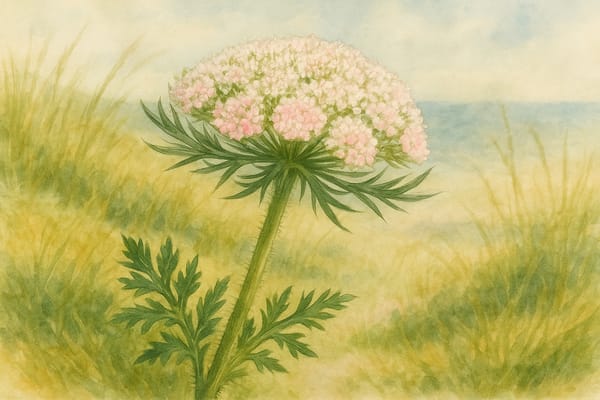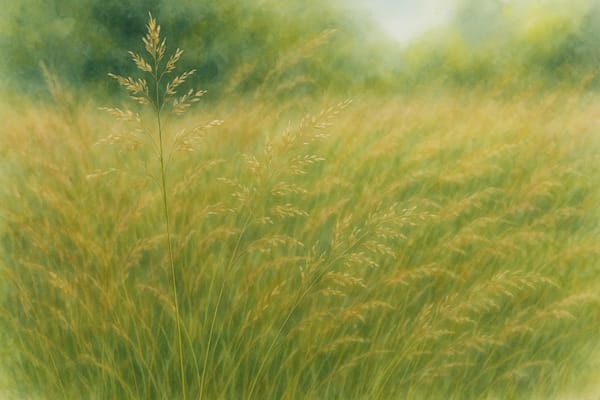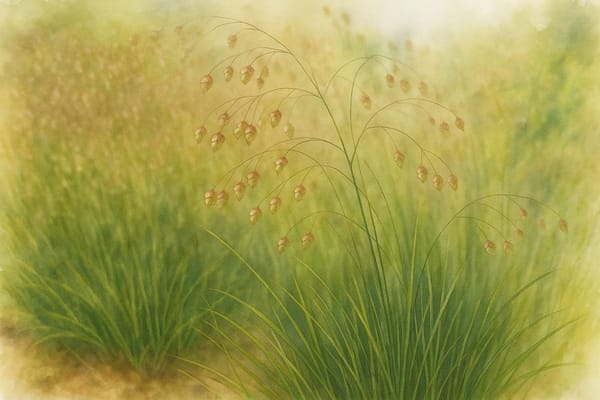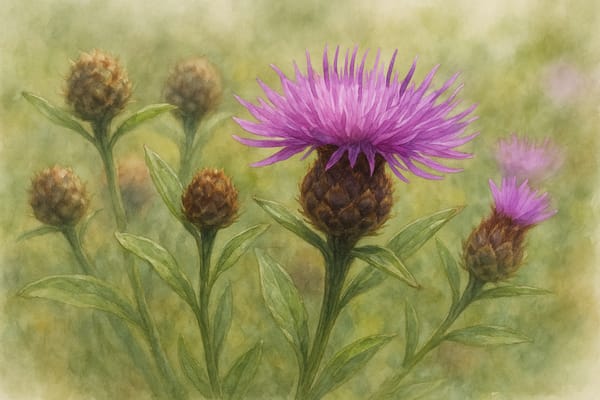Symbol of endurance, fertility, and the sea’s forgotten folklore
A familiar presence on windswept cliffs and sandy paths, the Sea Carrot is a plant that quietly weaves together ecology, mythology, and centuries-old tradition. Also known as wild carrot or Queen Anne’s Lace, this hardy biennial thrives in Cornwall’s most exposed places—and has long been valued as a sign of fertility, protection, and seasonal rhythm.
In Cornish Folklore and British Tradition
The Sea Carrot carries with it the echoes of Celtic ritual and coastal belief.
In ancient Scotland and parts of Cornwall, wild carrots were gathered around Michaelmas (St Michael’s Day) in late September. Women would sing as they dug the roots from the earth, binding them in bundles of three with red thread—symbols of the maiden, mother, and crone, or later, the Christian Trinity. These bundles were sometimes gifted to men as tokens of fertility and prosperity.
This harvest-time ritual, with its reverence for the sea and the cycles of life, reflected the wild carrot’s ability to thrive on the margins—along cliffs, dunes, and hedgerows battered by salt and wind. In folklore, it became a plant of protection and endurance, bringing good luck to coastal communities and guarding against misfortune at sea.
In other traditions, the plant was seen as a symbol of beauty and femininity. The delicate flower head, with its fine white filigree and single red central floret, was likened to lacework—earning the name Queen Anne’s Lace in later English stories. According to legend, the red spot was a drop of the queen’s blood from a pricked finger while sewing.
Cultural Uses
Beyond symbolism, the Sea Carrot had practical value. The roots could be used as a natural dye, producing yellow and orange tones for textiles—a practice likely rooted in Celtic customs. Medicinally, it was used in folk remedies for kidney and skin ailments, and even considered an aphrodisiac in some traditions.
Even its name, “carrot,” stems from a Celtic root meaning “red,” linking the plant’s role in seasonal abundance and fertility rituals.
Ecological Importance
As well as folklore, the Sea Carrot holds a key ecological role in coastal environments.
- Pollinator support: Its long flowering period attracts bees, butterflies, and hoverflies—especially valuable in salt-prone, nutrient-poor areas where few other species thrive.
- Soil stabilisation: Its deep taproot helps prevent erosion on sandy or sloping ground, improving soil structure.
- Wildlife shelter: The dense foliage provides cover for insects and birds, while its seed heads offer food in late summer and autumn.
- Biodiversity pioneer: Sea Carrot often colonises disturbed or poor soils, acting as a first wave in habitat restoration.
Its dual nature—delicate in appearance, but rugged in resilience—makes it a keystone wildflower in traditional coastal ecosystems.
How to Grow Sea Carrot in a Coastal Garden
Sea Carrot is wonderfully low-maintenance and highly tolerant of poor conditions, making it an excellent choice for naturalistic planting, pollinator borders, and cliffside schemes.
| Factor | Best Practice |
|---|
| Sunlight | Full sun (6–8 hours) |
| Soil | Well-drained, sandy or loamy; pH 6.0–7.5 |
| Water | Moist during establishment; drought-tolerant once mature |
| Salt & Wind Tolerance | High; ideal for exposed coastal gardens |
| Spacing | 12–18 inches between plants |
| Sowing Time | Early spring or late summer |
| Fertiliser | Light feeding every 4–6 weeks (seaweed or fish emulsion) |
| Pests & Diseases | Generally resistant; monitor for slugs and carrot fly |
| Container Growing | Use deep pots with drainage holes if planting on patios |
Additional Tips:
- Let flower heads go to seed for self-sowing and to attract wildlife.
- Avoid planting near similar-looking poisonous umbellifers such as hemlock—Sea Carrot has hairy stems and a central purple floret.
- Roots of mature plants become woody and are not edible; admire the structure rather than harvest.
In the Coastal Garden
Pair Sea Carrot with other salt-tolerant companions such as thrift (Armeria maritima), sea holly (Eryngium maritimum), or yarrow (Achillea millefolium) for a coastal palette that hums with life.
Its airy blooms bring movement to wild borders and its seed heads offer sculptural interest long after midsummer has passed. Let it naturalise along gravel paths, within wildflower meadows, or beside stone walls where it can echo the rituals of old—rooted in salt, wind, and seasonal memory.











